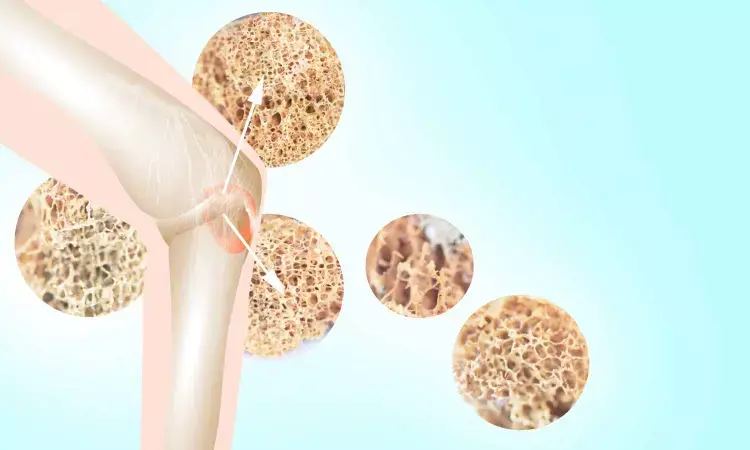- Home
- Medical news & Guidelines
- Anesthesiology
- Cardiology and CTVS
- Critical Care
- Dentistry
- Dermatology
- Diabetes and Endocrinology
- ENT
- Gastroenterology
- Medicine
- Nephrology
- Neurology
- Obstretics-Gynaecology
- Oncology
- Ophthalmology
- Orthopaedics
- Pediatrics-Neonatology
- Psychiatry
- Pulmonology
- Radiology
- Surgery
- Urology
- Laboratory Medicine
- Diet
- Nursing
- Paramedical
- Physiotherapy
- Health news
- Fact Check
- Bone Health Fact Check
- Brain Health Fact Check
- Cancer Related Fact Check
- Child Care Fact Check
- Dental and oral health fact check
- Diabetes and metabolic health fact check
- Diet and Nutrition Fact Check
- Eye and ENT Care Fact Check
- Fitness fact check
- Gut health fact check
- Heart health fact check
- Kidney health fact check
- Medical education fact check
- Men's health fact check
- Respiratory fact check
- Skin and hair care fact check
- Vaccine and Immunization fact check
- Women's health fact check
- AYUSH
- State News
- Andaman and Nicobar Islands
- Andhra Pradesh
- Arunachal Pradesh
- Assam
- Bihar
- Chandigarh
- Chattisgarh
- Dadra and Nagar Haveli
- Daman and Diu
- Delhi
- Goa
- Gujarat
- Haryana
- Himachal Pradesh
- Jammu & Kashmir
- Jharkhand
- Karnataka
- Kerala
- Ladakh
- Lakshadweep
- Madhya Pradesh
- Maharashtra
- Manipur
- Meghalaya
- Mizoram
- Nagaland
- Odisha
- Puducherry
- Punjab
- Rajasthan
- Sikkim
- Tamil Nadu
- Telangana
- Tripura
- Uttar Pradesh
- Uttrakhand
- West Bengal
- Medical Education
- Industry
A quick, inexpensive test for detecting osteoporosis risk developed

Spain: Researchers have developed a biosensor that could someday help identify those most at risk for osteoporosis using less than a drop of blood. The results of the study are reported in the journal ACS Central Science.
Age-associated diseases such as osteoporosis are having an increasing impact due to a worldwide increase in life expectancy. Early detection could help physicians intervene as soon as possible, but this type of detection is not yet possible with current osteoporosis diagnostic tests.
Osteoporosis is a condition characterized by an increased risk of bone fractures and affects about 54 million people in the U.S., according to the International Osteoporosis Foundation. Early intervention is important to reduce the mortality and morbidity associated with this condition.
Dual-energy X-ray absorptiometry is one of the most common techniques used for measuring changes in BMD (bone mineral density), but, it is not sufficiently sensitive for detection of BMD loss until a significant amount of damage has already occurred.
Several genomic studies have reported genetic variations known as single nucleotide polymorphisms (SNPs) to be associated with an increased osteoporosis risk. Against this background, Ciara K. O’Sullivan, University in Tarragona, Spain, and colleagues aimed to develop a portable electrochemical device that would allow quick detection of five of these SNPs in finger-prick blood samples in a step toward early osteoporosis diagnosis.
The device involves an electrode array to which are attached DNA fragments for each SNP. When lysed whole blood is applied to the array any DNA matching the SNPs binds the sequences and is amplified with recombinase polymerase that embodies ferrocene, a label that helps in electrochemical detection. The researchers detected osteoporosis-associated SNPs in 15 human blood samples using this platform, confirming their results with other methods.
The analysis can be performed quickly in about 15 minutes and inexpensively (< $0.5 per SNP) as the DNA does not have to be purified from the blood.
The researchers further add that the device offers great potential for use in point-of-care settings, rather than being limited to a centralized laboratory because the equipment and reagents are portable and readily accessible.
The technology is also versatile and can be readily adapted to detect other SNPs, as the researchers showed previously when identifying drug resistance in Tuberculosis mycobacterium from sputum and cardiomyopathy risk from blood. Although the device does not diagnose osteoporosis itself, it might help physicians identify people whom they should monitor more closely.
Reference:
ACS Cent. Sci. 2023, XXXX, XXX, XXX-XXX. Publication Date:July 19, 2023. https://doi.org/10.1021/acscentsci.3c00243
Dr Kamal Kant Kohli-MBBS, DTCD- a chest specialist with more than 30 years of practice and a flair for writing clinical articles, Dr Kamal Kant Kohli joined Medical Dialogues as a Chief Editor of Medical News. Besides writing articles, as an editor, he proofreads and verifies all the medical content published on Medical Dialogues including those coming from journals, studies,medical conferences,guidelines etc. Email: drkohli@medicaldialogues.in. Contact no. 011-43720751


